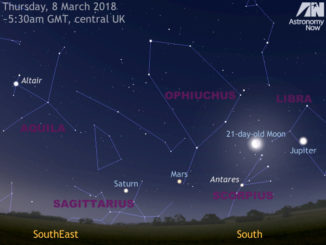
Ophiuchus

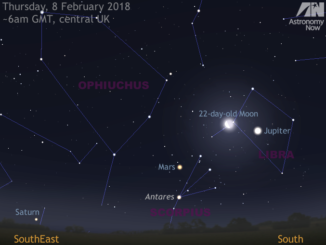
See the Moon’s dawn encounters with Jupiter, Mars and Saturn, 7–11 February
Set your alarm for 6am GMT if you wish to see three naked-eye planets in the UK dawn sky this week. Find a location that offers an unobstructed view of the horizon from southeast to south and let the waning Moon be your guide to locating Jupiter, Mars and Saturn on successive mornings from 7 to 11 February.
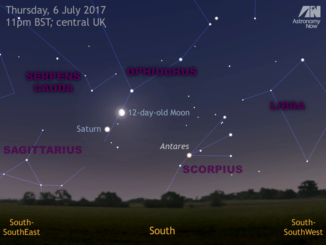
See the Moon meet the ringed planet on the night of 6—7 July
Skywatchers in the UK and Western Europe should cast their gaze low in the southern sky late into the evening of Thursday 6 July to see the 12-day-old waxing gibbous Moon in conjunction with ringed planet Saturn. The pair are separated by just 3½ degrees, nicely framed in a typical 10×50 binocular. For telescope users, the night of 6—7 July is also good for spotting Saturn’s bright moons. We show you what to look for and where.
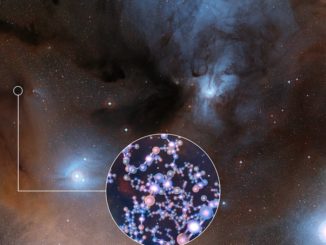
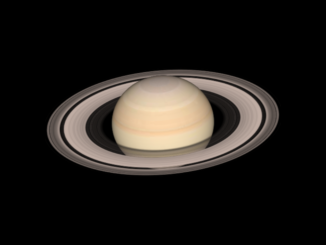
See Saturn at its best after a lunar rendezvous on 9—10 June
Skywatchers in the UK looking to the south-southeast shortly before midnight on Friday 9 June can see the rising full Moon just 2½ degrees above Saturn, the pair fitting comfortably in the same field of view of binoculars and telescopes magnifying less than 20×. Saturn is closest to the Earth for this year on 15 June, so here is our quick observing guide to the ringed planet at its best.

See the Moon meet the ringed planet on 14 May
In the small UK hours of Sunday 14 May, the rising 17-day-old Moon in the southeast lies just 2.4 degrees to the upper-left of Saturn, meaning that the pair will comfortably fit in the same field of view of a typical 10×50 binocular. The ringed planet is now about a month from opposition, so now’s the time to hone your observing skills.

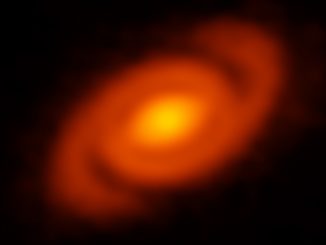
Protoplanetary disc’s spiral arms embrace young star
Swirling around the young star Elias 2-27 is a stunning spiral-shape pinwheel of dust. This striking feature, seen with the Atacama Large Millimetre/submillimetre Array (ALMA), is the product of density waves — gravitational perturbations in the star’s protoplanetary disc that produce sweeping arms reminiscent of a spiral galaxy, but on a much smaller scale.

See the Moon meet Saturn and Mars in the evening sky
A hundred days have passed since Mars was closest to Earth this year, but the Red Planet can still be seen in the early evening sky close to the jewel of the solar system, Saturn. If you wish to identify this pair of planets, then a convenient celestial marker in the form of the waxing crescent Moon passes by on the evenings of 8—9 September in the UK and Western Europe.

See the triple lineup of Antares, Mars and Saturn tonight
Observers in the British Isles with a clear sky one hour after sunset on 24 August should find a location that offers an unobstructed view of the south-southwest horizon. Here you will see first-magnitude star Antares in the constellation Scorpius, Mars and Saturn all in a line easily encompassed by low-power binoculars in the bright twilight.
